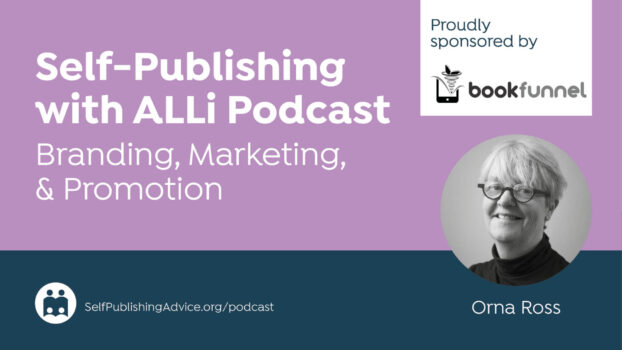 Indie authors often don't think about building a good e-mail database when they consider their book marketing plans.
Indie authors often don't think about building a good e-mail database when they consider their book marketing plans.
But the indications are that an accurate, comprehensive database of readers who like your writing is the most valuable marketing machine you can have.
It's email marketing power than enables Amazon to build up bestselling authors. and what works so well for the book giant will also work for you as author.
New York Times bestselling author Barry Eisler who became famous for turning his back on a six-figure publishing deal to self-publish his highly anticipated thriller The Detachment on Amazon Kindle explains: “In a digital world, the primary value a publisher can offer an author is direct-to-consumer marketing”.
“[Amazon's] book business is built on its ability to reach tens or even hundreds of millions of readers directly by email. Amazon marketing is both exceptionally focused (book buyers) and exceptionally broad (tens or even hundreds of millions of customers).”
And thanks to the tools put in place by Amazon, Kobo and other online distributors of ebooks and on-demand pbooks, we don't need that many readers to make a successful living from our writing.
An email list alerted to our books can help drive our books up the ratings and make them visible cin the online stores.
The technique seems to be particularly effective for nonfiction. Many of the biggest sellers of nonfiction online — Brendon Burchard, John Reese, Steve Pavlina — rarely use social media, preferring to opt for email. Brendon Burchard got his new book The Charge to appear briefly in the # 1 position on Amazon.com through an email marketing campaign.
Previously, Brendon has also used email campaigns to sell over 50,000 copies of his book The Millionaire Messenger and get it on the NYT bestseller list. But fiction writers too report success in building a readership over time with email marketing.
The other good thing about an email list is that it's yours. Facebook or Twitter and other social media sites could disappear tomorrow, taking your “following” with them — but email your list is attached to you.
How To Build a Good Database
Create an opt-in or sign up form on your website or blog so your website visitors can subscribe easily. Make this very visible on all pages of your site with compelling ad copy to invite people to sign in.
Remember to have an opt-out option as well. Try to send the newsletter only to those people who want to receive it and always promptly remove anyone who asks to no longer receive updates.
It is a good idea to sign up with a well-known email service provider like MailChimp or AWeber who shortcut the management of all this.
What To Put In Your Emails
The first thing you, as an indie author, will be concerned about is spreading news and updates about your book, including blog tour dates, noteworthy reviews and endorsements, or the publication of a new edition. But don't just send “buy my book” emails. Vary announcements about your books, and ways for the recipients to spread the wordk with offerings that make those who sign up look forward to hearing from you.
What you send will vary, depending on the kind of writing you do, but might include of the following:
- “Behind-the-scenes” reports of your experience with the publishing process
- Your creative process
- Tips about writing or publishing or anything related to the content of your books or anything that you, as an author, are expert on
- Exclusive content — recipes, photos, personal information
- Stories or poems
- Breaking news about your subject matter
- Interviews with other authors in your genre
- Book recommendations/reviews
CONCLUSIONS:
Pros: A way to repeatedly communicate with readers and build a tribe of true fans
Cons: Time-consuming and takes time to build. A lot of people are swamped by email and won't read your messages.
Cost: Varies depending on the number of recipients you have
Overall rating: 5/5




[…] 50 Ways To Reach Your Reader #6: Newsletters & Mailing Lists for Indie Authors by Debbie Young […]
[…] fans are found; some are made. One of the ways to turn a casual reader into a fan is by letting him behind the scenes of your work. When you provide your readers with exclusive glimpses of your pre-finished work, it […]
[…] fans are found; some are made. One of the ways to turn a casual reader into a fan is by letting him behind the scenes of your work. When you provide your readers with exclusive glimpses of your pre-finished work, it […]
[…] It would be wise to create a page on your blog or website letting visitors know that you are giving away ARCs. However, instead of just posting the entire file on your page so they can download it, make them opt into your email list. You do have one right? If not, read this step by step article by The Alliance of Independent Authors. […]
The mailing list providers mentioned in the post – MailChimp and Aweber – are probably the two leading companies in the market
But most self-published authors will probably prefer MailChimp. The interface is easier to use and it’s free for the first 2,000 subscribers.
I do accept as true with all of the concepts you’ve presented on your post. They are really convincing and can certainly work. Nonetheless, the posts are too quick for novices. May just you please lengthen them a bit from next time? Thank you for the post.
[…] Â Link to the original article: https://selfpublishingadvice.org/reaching-readers-email-marketing-for-indie-authors […]
[…] 50 Ways To Reach Your Reader #6: Newsletters & Mailing Lists | Successful Self-Publishing […]
[…] Link to the original article: https://selfpublishingadvice.org/reaching-readers-email-marketing-for-indie-authors […]
[…] See on selfpublishingadvice.org […]
That’s all well and good. However the single most important piece of information necessary to making this all work is missing.
How do you reach potential book buyers and get them to opt in?
Still, all good advice.
Thanks.
Great comment, Michael. The typical missing link in most indie-publishing marketing advice? How to find buyers of new authors. The answer is mostly reviews but that’s not enough–someone has to write them and someone has to read them. Of course established authors have that advantage–they are known to someone.
Here is a link to this site from today. I’m looking for someone to market my book while I write the next one. Good reviews, 32 reviews–4 star average–have not been sufficient and I cannot bear to swap inanities for hours on end to establish a Twitter “presence.”
https://selfpublishingadvice.org/the-internet-will-land-me-in-jail/
I have a web site, a blog, a twitter account, a face book account (2) la,la,la. I will happily give up significant income to someone who knows how to reach beyond my readers to the type of readers who will like my book. The reviewers give clear indicators of who they might be. I just don’t know how to reach them.
And good luck to both of us.
david